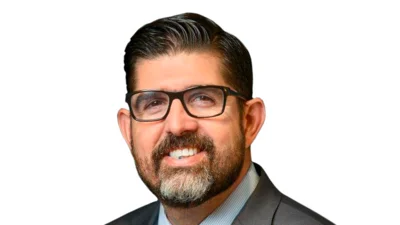Brian Penny/Pixabay
Brian Penny/Pixabay
Ryder and Tucker came prepared for their homeschool group’s encounter with the Crestview Living History Corps. The boys wore their own helmets, and Ryder had his knapsack on his back. You never know when Sarge might call a hike!
It’s not often students can walk right up to a World War II soldier or nurse and ask about their uniforms, equipment or role in the war. But on Feb. 23, elementary to high school members of the NWF Share homeschool coalition got to do just that at the Crestview History Museum.
“This is so cool!” Tucker exclaimed as he and Ryder tried on genuine World War II Red Army soldier and sailor hats, relics from the personal collection of Shobu Hasegawa, whose impression — re-enactor lingo for the type of soldier being portrayed — was a Cossack volunteer with the German Heer (army).
“The Cossacks hated the Russians,” Shobu said, “so they’d eagerly volunteer to fight with the Germans invading the USSR.”
The students divided into four groups and during their afternoon encounter with history, rotated from room to room around the historic Bush House. In the museum’s main exhibit room, they met Erica Slaughter, ironically portraying a German Red Cross nurse.
Nearby, her boyfriend, Andrew Daigle’s, impression was a dreaded German SS paratrooper. His collection of weapons, insignia and helmets from both sides of the war offered lots of photo ops as well as the chance to ask questions about the American’s wartime German opponents.
In the kitchen, Grant Brooks and Cade Fisher portrayed a pair of American paratroopers from the 1st Battalion, 505th Parachute Infantry Regiment. Grant’s impression was a soldier who dropped behind the beaches the night of June 5 and 6, 1944, in advance of the D-Day landings.
Cade wore a similar uniform but carried equipment of a paratrooper who fought in Operation Market Garden, the ill-fated Allied attempt to capture German-held bridges in the Netherlands during Sept. 17-27, 1944.
Grant also served as the re-enactors’ safety officer during the homeschoolers’ visit, checking every weapon prior to the students’ visit to assure there was no ammunition — blank or live — in the magazine or chamber, and that no re-enactor had any ammunition with him or her.
Sticklers for historic accuracy, the college-aged re-enactors, who are not much older than the warriors they portray, easily slip from preliminary introductions into the first-person present as they describe the battles their impression would’ve been fighting.
Their uniforms and equipment are, whenever possible, actual World War originals or, when not, accurate reproductions. Their portrayals are accurate down to Grant’s chalk-covered jacket — a way to simulate substances used to combat potential chemical weapon attacks.
“The ‘CC2 impregnation’ of uniforms was a process of infusing chemicals into their uniforms to basically stop chemical weapon discharges,” Grant said, explaining CC2-chloramide to his young audiences. “It would make the uniform look dirty, waxy and very stiff but would prevent chemical weapons from seeping through.”
Fortunately for American paratroopers, their German and Italian foes never deployed chemical weapons in World War II. Besides, soldiers such as Grant and Cade portrayed had other worries to concentrate on, not least of which were enemy bullets — and the weight of their own gear.
“My full equipment and clothing weighs about 62 lbs. and my parachute assembly is about 43 lbs.,” Grant said. “So total with everything is 105 lbs.”
Once the encounter got going, it was difficult to tell who was having more fun: the students trying on helmets, caps and hoisting — especially in Ryder and Tucker’s case — rifles longer than they were tall, or the Living History Corps members.
“We love sharing our hobby with young people,” Andrew said after the students had left and the re-enactors took some time to check out each other’s gear. “They just see guys like we portrayed in history books. We make history come alive.”
CRESTVIEW LIVING HISTORY CORPS
Members of the Crestview Living History Corps visit classrooms, scout troops, social organization meetings, and similar gatherings. For information, contact the Crestview Cultural Services Division at the Bush House, at hughesb@cityofcrestview, 850.398.5459.
Original source can be found here.





 Alerts Sign-up
Alerts Sign-up